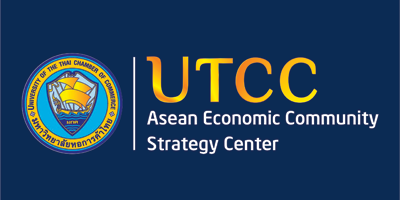Myanmar: Embrace integrated marketing: industry expert
While it is easy to stick to old methods and rely on traditional marketing techniques, there are now more tools than ever for companies to take advantage of in order to manage their brand, and the arrival of multinational corporations (MNCs) has disrupted the local competition among Myanmar firms. Thomas Hayward, founder and executive creative director of MultiVerse Advertising, told The Myanmar Times.
“There has been increasing competition among local and international [companies] and if marketers don’t change their professional approach – if you don’t move from a tactical to a strategic one, there are going to be a lot of companies suffering here,” he said last week, referring to all kinds of businesses involved in a wide range of sectors, such as consumer products, food and beverages and locally manufactured goods.
What is taking place in the current market is that local firms are competing with international ones but their approach has not changed from past practices and has remained very tactical, such as purchasing a billboard and getting a print advertisement. These conventional methods will no longer help them survive the competition, the business executive explained.
“For international firms, we have been looking at advertising from a more strategic point of view than a tactical one for some years.
“It is very important for both local and international firms to understand integrated marketing,” he said.
Integrated marketing refers to an approach to integrate all aspects of marketing and communications, such as linking strategies in advertising, sales to traditional and social media, creating a framework to deliver the message and working through multiple channels. It aims to convey the brand story more effectively to the consumers.
Mr Hayward shared a “very interesting observation”.
“When I first moved to here [Yangon] three years ago, all my clients are international because international clients understood marketing strategy, integrated marketing as well as the importance of brand management and brand continuality. Those were basically all of my clients so I was working with Ford, Jaguar, Land Rover, Carlsberg and Oppo Electronics, for example.”
However, he added, a lot has changed since then. Many of his clients now include local conglomerates and local businesses, which have realised that they have to change the game in the field of marketing and communications.
Mr Hayward explained that integrated marketing is purely strategic. It is about putting the customers at the centre of the marketing campaign and at the core of the brand’s message. Then a big story has to be built around the consumers and it should be communicated to them through effective market channels. The channels involve fresh concepts of how to engage and new ways of thinking about marketing from a variety of angles, and place an emphasis on a multimedia approach in advertising, events promotion, public relations and social media management.
“So what is happening now is that we are getting calls and clients are coming in and telling us that ‘I am doing the same thing I have done for years but it’s not yielding results. I am losing market share and I don’t know what to do.’ That is why a lot of what our firm does is education,” he said.
A lot of companies are spending a lot of money but they do not really understand their audiences, he said.
“Honestly, you drive around and you look at the billboards, the products on the billboards are not using the proper channel to communicate with their audiences. There should be some channels that can communicate with their audiences effectively,” Mr Hayward added.
Daw Wai Me Phu, marketing and business development executive of Mitsubishi Electric Asia Pte in Yangon said that local companies need to “go parallel” with current marketing methods with integrated marketing.
“We use normal marketing channels such as billboards and TV ads and print ads, but we can’t stop and be content with those because we need to find new ways to differentiate from other competitors and penetrate the market.
“We can’t switch to integrated marketing entirely until another three to five years because we are not very technologically capable. Our approach still consists of billboards and TV and print ads,” she explained.
“So at least we can share our products ads via social media. Small events are also another way which the local companies don’t think of as cost but as investments. Billboards and print ads are still effective for local audiences though it is hard to guess what we exactly achieve from that type of ads,” she said. The yardstick for measuring success in those types of advertisements is tricky. Popular social media platforms in Myanmar include Facebook, Viber, Youtube, Instagram and Beetalk.
International brands have big investment plans for marketing but local companies also have an advantage – they are better at understanding local cultural preferences and the “local taste”, she added.
What if an international corporation takes over or creates a joint venture with a local firm?
Both sides could then share the capital advantages of the multinational while tapping local expertise. These strengths, combined with an integrated marketing strategy, would help the business to compete effectively and succeed with a robust marketing campaign, according to Mr Hayward.
Source: http://www.mmtimes.com/index.php/business/25054-embrace-integrated-marketing-industry-expert.html


 Thailand
Thailand




